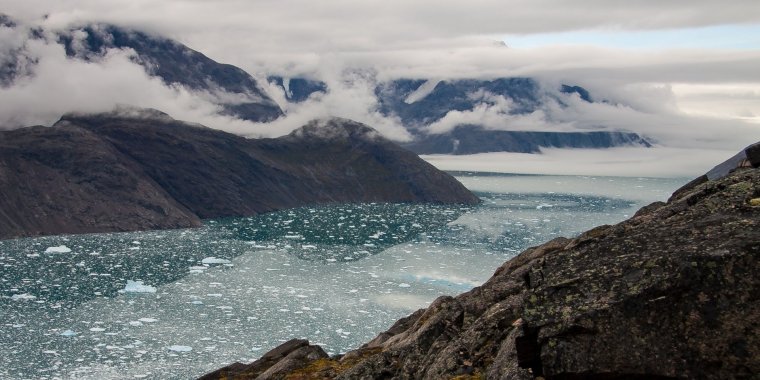| News / Science News |
A new chapter in the history of evolution
Microscopic fragments of environmental DNA were found in Ice Age sediment in northern Greenland. The fragments are one million years older than the previous record for DNA sampled from a Siberian mammoth bone.

Greenland today. Photo: mahlersilvan/Unsplash
The ancient DNA has been used to map a two-million-year-old ecosystem which weathered extreme climate change. The results could help predict the long-term environmental toll of today’s global warming.
The discovery was made by a team of scientists led by Professor Eske Willerslev and Professor Kurt Kjær. Professor Willerslev is a Fellow of St John’s College, University of Cambridge and Director of the Lundbeck Foundation GeoGenetics Centre at the University of Copenhagen where Professor Kjær, a geology expert, is also based.
“The ancient DNA samples were found buried deep in sediment that had built-up over 20,000 years,” says Kjær. “The sediment was eventually preserved in ice or permafrost and, crucially, not disturbed by humans for two million years.”
The incomplete samples, a few millionths of a millimetre long, were taken from the København Formation, a sediment deposit almost 100 metres thick tucked in the mouth of a fjord in the Arctic Ocean in Greenland’s northernmost point.
The climate in Greenland at the time varied between Arctic and temperate and was between 10-17C warmer than Greenland is today. The sediment built up metre by metre in a shallow bay.
Evidence of animals, plants and microorganisms including reindeer, hares, lemmings, birch and poplar trees were discovered. Researchers even found that Mastodon, an Ice Age mammal, roamed as far as Greenland before later becoming extinct.
Previously it was thought the range of the elephant-like animals did not extend as far as Greenland from its known origins of North and Central America.
Detective work by 40 researchers from Denmark, the UK, France, Sweden, Norway, the USA and Germany, unlocked the secrets of the fragments of DNA.
The process was painstaking – first they needed to establish whether there was DNA hidden in the clay and quartz, and if there was, could they successfully detach the DNA from the sediment to examine it?
The answer, eventually, was yes. The researchers compared every single DNA fragment with extensive libraries of DNA collected from present-day animals, plants and microorganisms. A picture began to emerge of the DNA from trees, bushes, birds, animals and microorganisms.
Some of the DNA fragments were easy to classify as predecessors to present-day species, others could only be linked at genus level, and some originated from species impossible to place in the DNA libraries of animals, plants and microorganisms still living in the 21st century.
The two-million-year-old samples also help academics build a picture of a previously unknown stage in the evolution of the DNA of a range of species still in existence today.
“The Kap København ecosystem, which has no present-day equivalent, existed at considerably higher temperatures than we have today – and because, on the face of it, the climate seems to have been similar to the climate we expect on our planet in the future due to global warming,” says co-first author Assistant Professor Mikkel Pedersen of the Lundbeck Foundation GeoGenetics Centre.
“One of the key factors here is to what degree species will be able to adapt to the change in conditions arising from a significant increase in temperature. The data suggests that more species can evolve and adapt to wildly varying temperatures than previously thought. But, crucially, these results show they need time to do this. The speed of today’s global warming means organisms and species do not have that time so the climate emergency remains a huge threat to biodiversity and the world – extinction is on the horizon for some species including plants and trees.” (University of Cambridge)
YOU MAY ALSO LIKE





